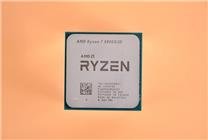SpaceX Launches Pioneering AI Data Center Satellite in Historic Mission
Summary:
- SpaceX successfully launched the Falcon 9 rocket, completing its 18th mission with 18 satellites on board.
- Among the payloads is Starcloud-1, marking humanity’s first attempt to establish an AI data center in space.
- The satellite, equipped with cutting-edge GPUs, aims to revolutionize cloud computing through solar-powered, efficient solutions.
On November 2, 2023, at 13:09 Beijing time, SpaceX accomplished a remarkable feat by launching the Falcon 9 rocket, designated B1091, undertaking its 18th mission in history. This latest launch has set a new milestone in satellite deployment, carrying a total of 18 payloads into orbit.
Key Payloads of the Launch
One of the most significant payloads onboard was a reconnaissance satellite developed by the South Korean Ministry of National Defense as part of its "Project 425." This satellite, like its predecessors, is equipped with advanced Synthetic Aperture Radar (SAR) technology for detailed imaging. Additionally, the mission included an electromagnetic and infrared reconnaissance satellite, enhancing the capabilities of modern surveillance.
Introducing Starcloud-1: A New Era in Space Computing
However, the highlight of this launch is undoubtedly Starcloud-1, which stands as humanity’s pioneering effort to place an AI data center in outer space. Funded by NVIDIA, this ambitious satellite represents a significant leap forward in how we approach cloud computing and data processing technologies.
Weighing about 60 kilograms and roughly the size of a refrigerator, Starcloud-1 is outfitted with an NVIDIA H100 GPU accelerator. This powerful component enables the satellite to run sophisticated AI models, including specialized versions of the well-known Google Gemini model. The implications of this technology are vast, potentially paving the way for on-demand cloud services from space.
Future of Cloud Computing in Space
Crusoe, the company overseeing the Starcloud project, plans to make this satellite operational for cloud services by the end of 2026, with GPU computing power slated to be available by early 2027. This innovative approach offers scalable cloud solutions that challenge traditional data centers’ limitations.
NVIDIA expressed pride in this achievement, noting it as the first instance where a top-tier, data center-grade GPU has been delivered into outer space. This satellite isn’t just about computation; it is also equipped with a large solar array that harnesses solar energy, positioning it as a sustainable and power-efficient alternative to terrestrial data centers.
Addressing Energy and Resource Consumption
One of the pressing issues facing modern AI data centers is their significant water and electricity consumption. Starcloud-1 addresses this challenge innovatively; it utilizes vacuum technology as an "infinite radiator," effectively managing heat dissipation without relying on the traditional cooling methods used on Earth. The solar-powered design promises a nearly limitless supply of energy, potentially reducing operational costs to about one-tenth of that associated with ground-based solutions.
Furthermore, projections indicate that within the next decade, a considerable proportion of new data centers may operate in the cosmic expanse, completely transforming the landscape of cloud computing.
Conclusion
SpaceX’s recent launch exemplifies the forefront of aerospace technology and innovation. As we look toward the future, initiatives like the Starcloud project represent not only technological advancements but also a sustainable approach to the challenges posed by current data center operations. The successful deployment of cutting-edge AI facilities in space could redefine our understanding of computing, unlocking new possibilities that were once thought to be the realms of science fiction.
By continuously pushing the boundaries of technology, SpaceX and its partners are shaping a future where accessibility to advanced computing resources is no longer limited by earthly constraints.






